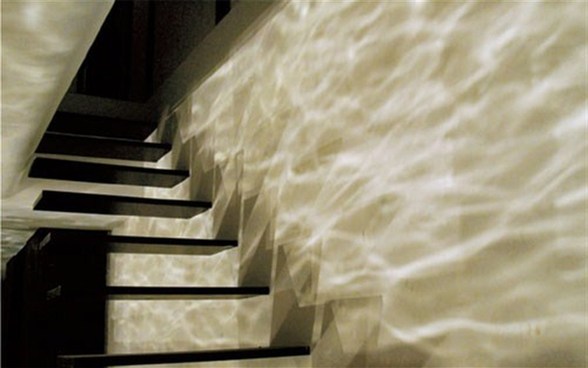Tan Dun's 'Water Heavens' to open in new season
 0 Comment(s)
0 Comment(s) Print
Print E-mail Shanghai Daily, January 25, 2016
E-mail Shanghai Daily, January 25, 2016
The unity of man and nature is a recurring theme in arts, but when Oscar- and Grammy-awarded composer Tan Dun brings this topic to the stage, he goes all out.
 |
|
The interior of the Water Heavens concert hall [Photo/Shanghai Daily] |
Water Heavens, a program created by Tan in 2010 that combines music and architecture, will start its new season in March at Zhujiajiao water town in Shanghai.
A concert hall, also called Water Heavens, was constructed specifically for the composition and is connected to a canal. The canal's water plays a vital role in the program, and audiences can expect to witness multiple-layer communication between East and West, architecture and music, nature and people, Buddha and god. Conceived for strings and vocals, and, of course, water, which plays a central role, Water Heavens is a multidisciplinary piece.
Situated on the riverbank across the Yuanjing Temple in Zhujiajiao, the concert hall is in an old, two-story house that already shows the marriage of East and West that is emblematic of Water Heavens. While the wooden structure of the upper story is kept in the style of about 100 years ago, the iron pillars and steel floor of the lower story are reminiscent of an industrial space fashioned after German Bauhaus style.
The performance usually starts right when Buddhist monks at the opposite river start their evening chanting. As the monks raise their sung prayers, the string quartet sets in with a piece by German composer Johann Sebastian Bach. The stage is partly submerged in water, and as musicians rock their bodies and move their feet while they play, the sound of splashing water becomes part of the performance.
From the dome, artificial rain showers pour onto certain areas around the audience and the musicians. Varying in intensity, the dripping water also adds to the holistic experience. Even the steel stairs at one side of the concert hall are used to create sounds with performers stepping on them to bring the audience to a unique music world where Bach meets Zen.
In the process, the river flows in and out through the house, linking the interior and exterior space.
"The combination of the Chinese Ming house and German Bauhaus styles, as well as the contrasting sounds of water, iron and other natural elements completes my architectural music wonderland where heaven and man become one," says Tan. "My ultimate goal for Water Heavens is to create a space where music can be seen and the architecture can be heard."






Go to Forum >>0 Comment(s)